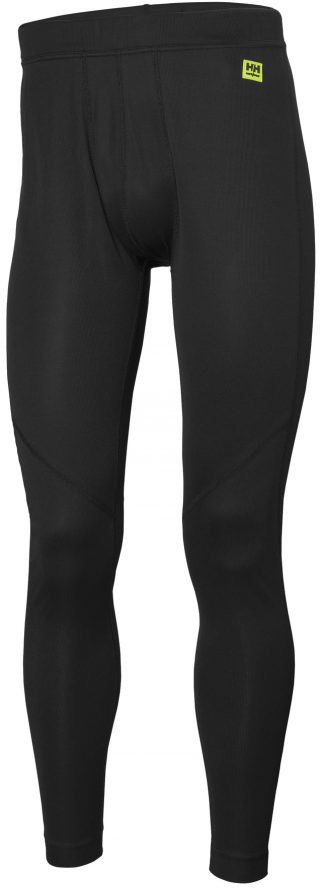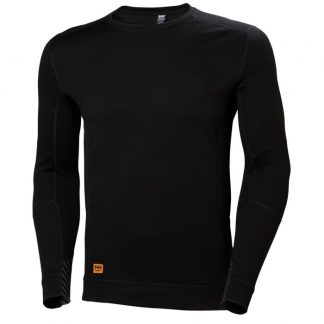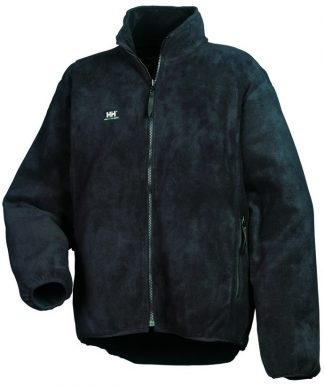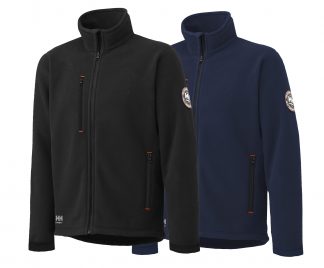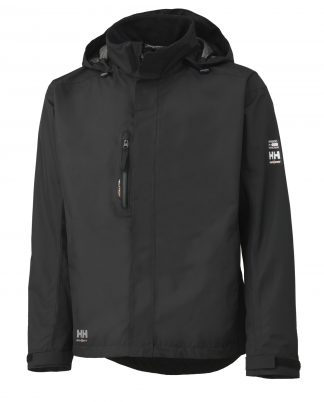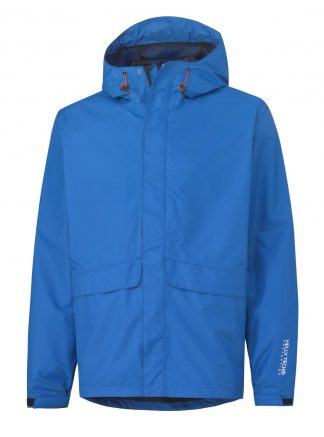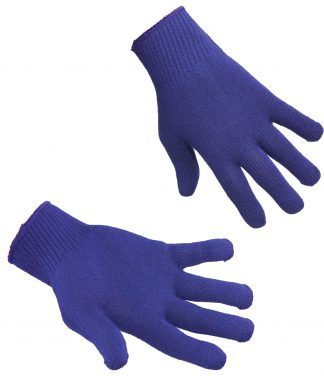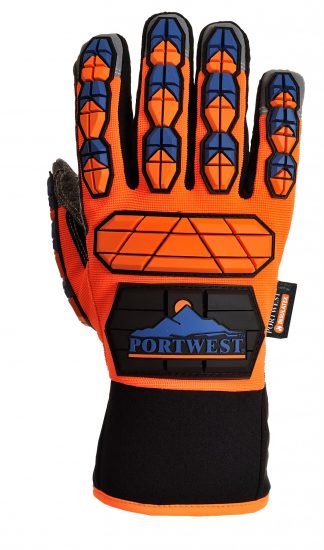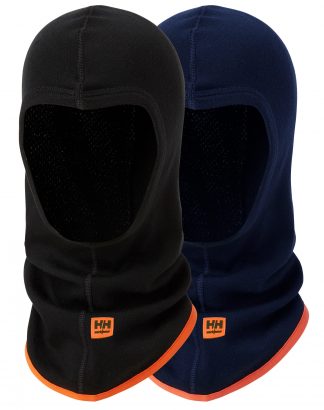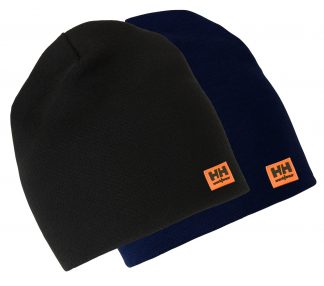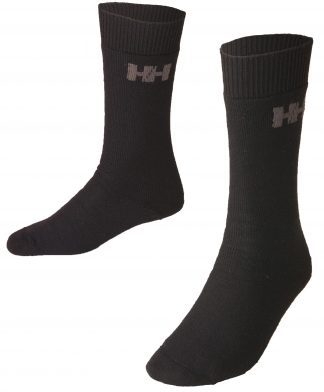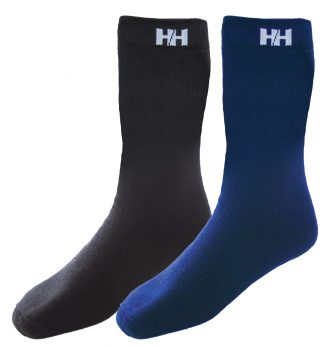
When it comes to working in cold, you’ve got to protect yourself. It is important to dress properly when facing a long workday outdoors or when your find yourself exposed to the cold for an extended period of time.
One of the best things you can do to protect yourself against the cold is to wear an optimized layer of clothing. Layering up is important because it not only provides significant insulation and protection against moisture and wind, but allows sweat to be wicked away and released into the atmosphere. Preventing sweat is important because when moisture meets cold, it leads to significant loss of body heat which can then lead to hypothermia.
While layering up is important, it is also extremely important to protect your extremities like your head, hands and feet. Your extremities are the first to fall victim to frostbite and should be well protected. Even without going to the extreme; any hindrance to your hands or feet can affect performance, morale and even the lives of others.
Finally, it is important to know the signs and symptoms of hypothermia, how to prevent the condition and what to do if it happens to you or those around you.
Layer up
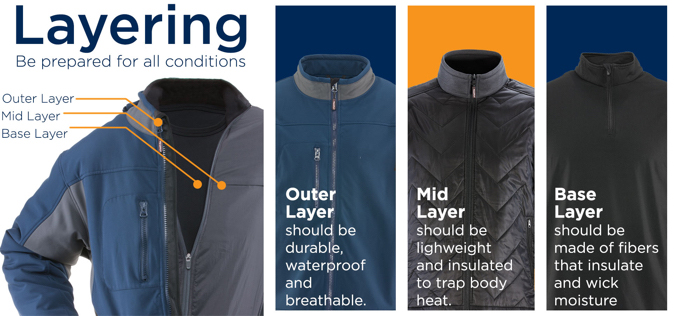
Layering up doesn’t mean wearing 5 shirts, 2 hoodies, 4 pairs of pants and a winter jacket. It is the ideal of having an optimized set of clothing to prevent sweat, wick away moisture and ensure warmth and stability.
Typically, a 3-layer solution is all that is needed for peak performance in the coldest climates on the planet. First starting with a base layer; a thin fabric which promotes breathability and wicks away moisture. Your next layer should be a thicker insulation layer; while still allowing fresh air to pass through your garment. Finally, your outer layer, or shell, or weatherproof armor; is the waterproof, windproof, breathable layer of fabric designed to keep the harsh elements exactly where they belong, out!
For a little more depth; let’s explore what each layer does and why the 3 layer system is so effective.
Base layer
The primary function of the base layer is to wick away moisture to prevent sweat. The idea is when you sweat, your body produces moisture. When cold air meets moisture; you endure significant heat loss and your risk of hypothermia or serious injury increases dramatically. A quality baselayer is lightweight, and breathable.
Base Layers allow fresh air to circumvent the skin to prevent sweat and thus, hypothermia. Any sweat that is produced is picked and transported away from your skin and into your next layer; the midlayer.
Examples of base layers include thin garments which cover large portions of your body; think long underwear and thermal shirts.
Mid layer
The mid layer’s primary function is to insulate your body to keep you warm and comfortable in the harshest of weathers. The midlayer works by trapping thousands of microscopic warm air pockets and hugs them close against your body to prevent heat loss.
Examples of mid layers include fleeces, jacket liners, hoodies and sweatshirts; as long the garment is both warm and breathable. The other important job of the midlayer is to allow moisture to continue its journey outward until it can be finally released into the atmosphere through your outer shell.
Outer shell
The outer shell is your armor; it is what protects you against the elements. A quality outer shell is both waterproof and breathable. The outer shell allow must remain breathable enough to perform the final function of allowing moisture up through the material and releasing your sweat into the atmosphere.
Examples of an outer shell are waterproof jackets with some kind of mesh lining or winter coats with breathable insulation to finalize that water transport process.
Find a good pair of gloves
Obviously gloves are important for keeping your hands warm when working outdoors. They not only provide a crucial layer of protection when handling frozen materials, they often provide a layer of insulation for prolonged exposure to the cold.
While your hands aren’t the first body part to fall victim to frostbite, they are a close second. Protecting your hands from the bold is extremely important, but many decide to go without gloves. Many decide to forget about gloves when their work requires dexterity. Understandably, it can be frustrating when you have to repeatedly remove your gloves to perform a simple task; which is why we recommend you find yourself a pair of good gloves.
Nowadays, there is a large variety of work gloves to choose from. There are insulated gloves designed to provide the wearer with warmth, other gloves are waterproof and even general purpose gloves built for grip and dexterity.
Luckily, there are gloves built for all three. Many gloves are dipped with nitrile, latex, or polyester and textured for superb grip even when wet or frozen. Many of these surfaces are waterproof to prevent loss of dexterity through exposure to moisture and cold. On the interior of these gloves, you’ll find a thin, yet warm layer of insulation to keep hands nice and toasty while not inhibiting dexterity.
Protect your head
While it isn’t exactly true that most of your heat loss is through your head, that doesn’t mean it isn’t important to bundle up and protect your head against the cold. Many think that it’s your hands and feet that need the most protection against frostbite; but actually its your face and cheeks which are affected first.
There are many ways to protect your head, neck and face against the cold. It is important to consider what is you will be doing outside and how long you’ll be doing it. For high-activity solutions, many prefer something which can protect the entire face and even allow the wearer to breath through the fabric.
While a beanie is great for keeping your scalp warm, it falls short of protecting your neck and face. We prefer to use a balaclava or neck gaiter because of the amazing versatility of the product. Balaclavas are more of an entire head solution to cold weather, allowing the wearer to reposition based on what is most affected. Another reason a balaclava or neck gaiters are so great is they are typically thin and lightweight; allowing the wearer to breathe through the garment to prevent ‘winter cough’, a condition which appears when someone is breathing heavily in extremely cold conditions.
Boots are essential
Your head and hands aren’t the only parts of your body which need the proper protection against the cold. It is extremely important that your feet stay both warm and dry when exposed to the elements for any extended period of time. There are many ways to keep your feet warm and toasty but we recommend two simple solutions; a double socks, and winter boots.
Double Socks
Double socks? Sounds silly but if you think of it; your feet ( like your body ) need a baselayer top! That is why we don’t just recommend any two sets of socks but instead a nice thin layer to wick away moisture and a heavy thermal layer to insulate and keeps your toes nice and toasty.
The thin ‘base layer’ sock will not only help to prevent your feet from sweating; but also allows any moisture from to be transported up and away from your feet. The thicker socks, not only insulate the feet to ensure warmth and comfort; they also provide a bridge which allows the moisture to move away from the skin and be released into the atmosphere.
Winter Boots
Winter boots are everything when it comes to protecting your feet from the elements. You may recall that the most effective layering solution includes a base layer, a insulation layer and the outer layer. Think of your feet in much the same way; you’ve got a thin sock to wick away moisture, and a thicker sock for insulation. The next layer should be your ‘armor’ against the elements.
Without your armor, your base and mid layers are worthless; they get wet and will need to be removed immediately to prevent hypothermia or frostbite. Your boots are the armor of your feet; protecting them against moisture, wind, and debris. You want boots that are not only comfortable, but boots that ensure your feet stay dry and thus; warm. A quality pair of boots should be both waterproof and breathable.
It is important to remember that moisture is not only an exterior hazard, but one that comes from within as well. You need a shoe that is breathable to allow that moisture to be transported up from your skin, through base and mid layers and finally released into the atmosphere to get rid of the excess moisture.
Know the signs of hypothermia
Hypothermia is a medical emergency that occurs when your body loses heat faster than it can produce. This results in a dangerously low body temperature and can cause your heat, nervous system and other organs to shut down and ultimately lead to death. In order to combat hypothermia; it is important to first identify the signs for when action is needed.
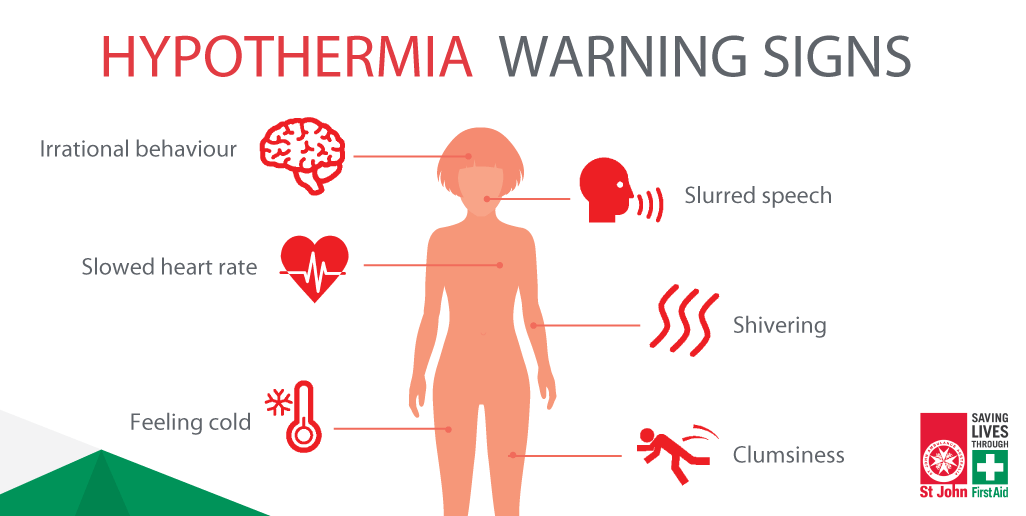
Signs and symptoms of hypothermia include:
- Shivering
- Slurred speech / Mumbling
- Shallow Breathing
- Slow or weak pulse
- Lack of coordination
- Low energy
- Unconsciousness
- Loss of self awareness
If any of the signs are identified while working in cold weather; it is important to stop immediately and get yourself indoors and warm up. If you suspect you, or a co-worker has hypothermia, it is important to call 911 or seek medical assistance immediately.
Prevention
If you expect to be working in cold weather for any extended period of time, it is important you take the proper precautions to protect yourself against father frost and mother nature. Staying warm in cold weather is as simple as following the COLD method — cover, overexertion, layers and dry.
Cover:
You’ve got to protect yourself against cold, wind and moisture. It is important to cover as much of your body as possible to stay warm and prevent hypothermia. It is especially important for those working outdoors to keep extremities warm by protecting your head, neck, hands and feet.
Overexertion:
If you are working outdoors, it is extremely likely you will find yourself over exerting yourself. The trick here is to be wearing a good base layer to prevent sweat. You need a thin foundation layer of clothing that is both breathable and moisture wicking. Remember, moisture + wind + cold = hypothermia very quickly.
Layers:
Layering up for working in cold may not be as simple as it first appears. It is important to keep thin, breathable layers against the skin, and bulk up as you move up through the layers. The classic 3-layer combo is recommended by many outdoors man; starting with a base layer, then a warm insulation layer and finally a waterproof layer to protect against the elements.
Dry:
Stay dry to prevent hypothermia. If you recall, hypothermia sets in when your body is losing heat faster than it can produce. When your body is wet, that speeds up heat loss and allows hypothermia to set in even quicker. It is important to stay dry, especially when working outdoors. The best way to stay try is to prevent sweat with moisture wicking and breathable clothing as well as wearing waterproof jackets, gloves, boots and other forms of protection against the elements.
Hypothermia is a serious medical condition that should be taken very seriously and those expecting to be outdoors should take the proper steps of prevention. It is important that your remember COLD — cover yourself, avoid overexertion, layer up and stay dry. If you find yourself or others displaying any of the warning signs or symptoms of hypothermia such as shivering, slurred speech, lack of coordination or memory loss; it is important to get yourself indoors immediately and possibly even contact 911 if the symptoms are severe enough.
TL;DR
For those got like to skim, we’ll give the broad strokes of this article.
It is incredibly important that you prepare yourself when exposed to extreme cold for any extended period of time. What does preparation look like? Well first and foremost; you must dress for the weather. It is important that you wear an optimized set of layers that promote breathability and wick away moisture.
We prefer the classic 3-layer set of protection which includes a base layer, insulation, and waterproof outer shell. Next; you must not forget about your head, hands and feet. Your extremities are just as; if not more important than your core. Finally it is important to know the warning signs and symptoms of hypothermia and how to prevent the condition. Remember that working in cold weather is serious business and needs to be treated accordingly.
